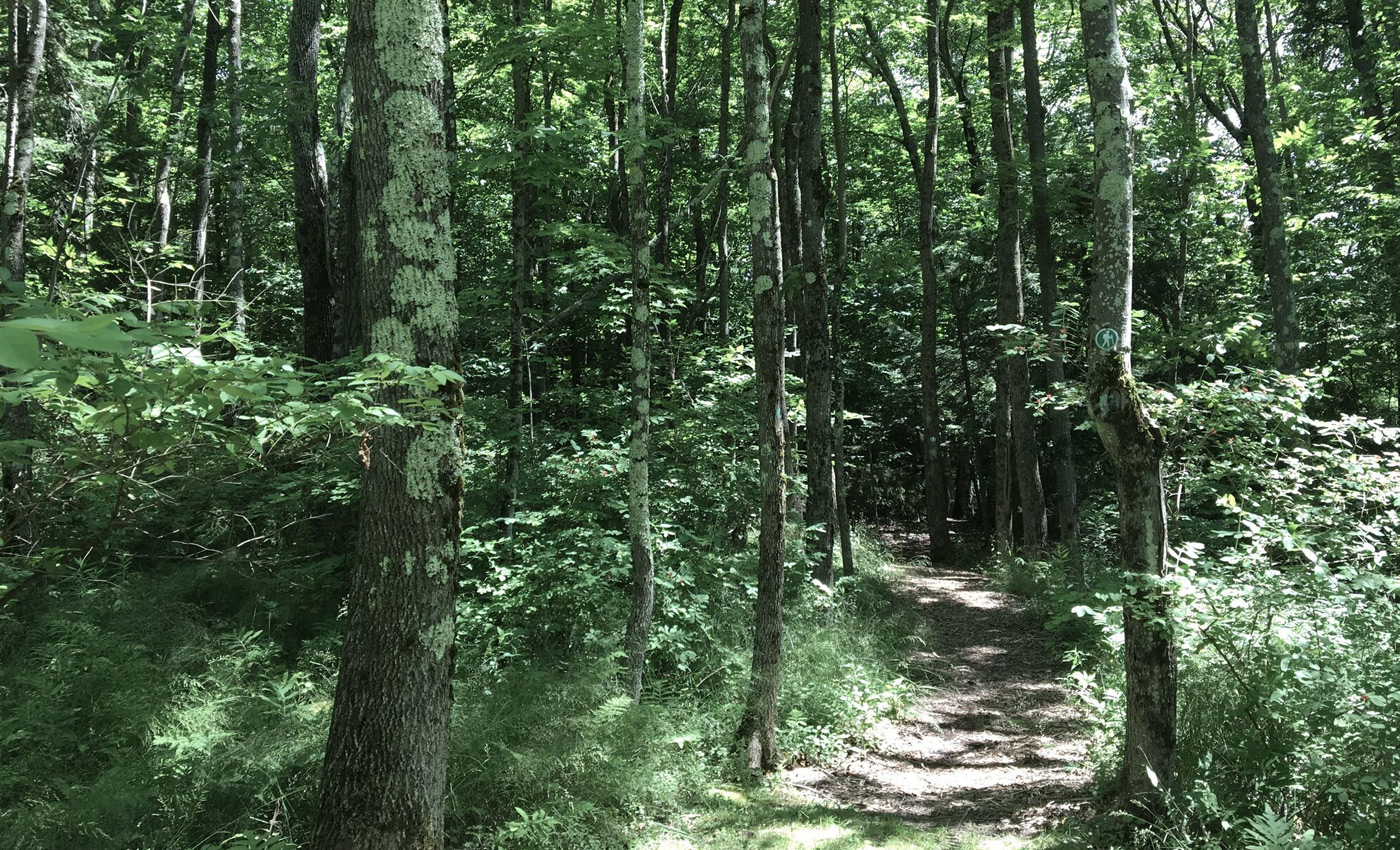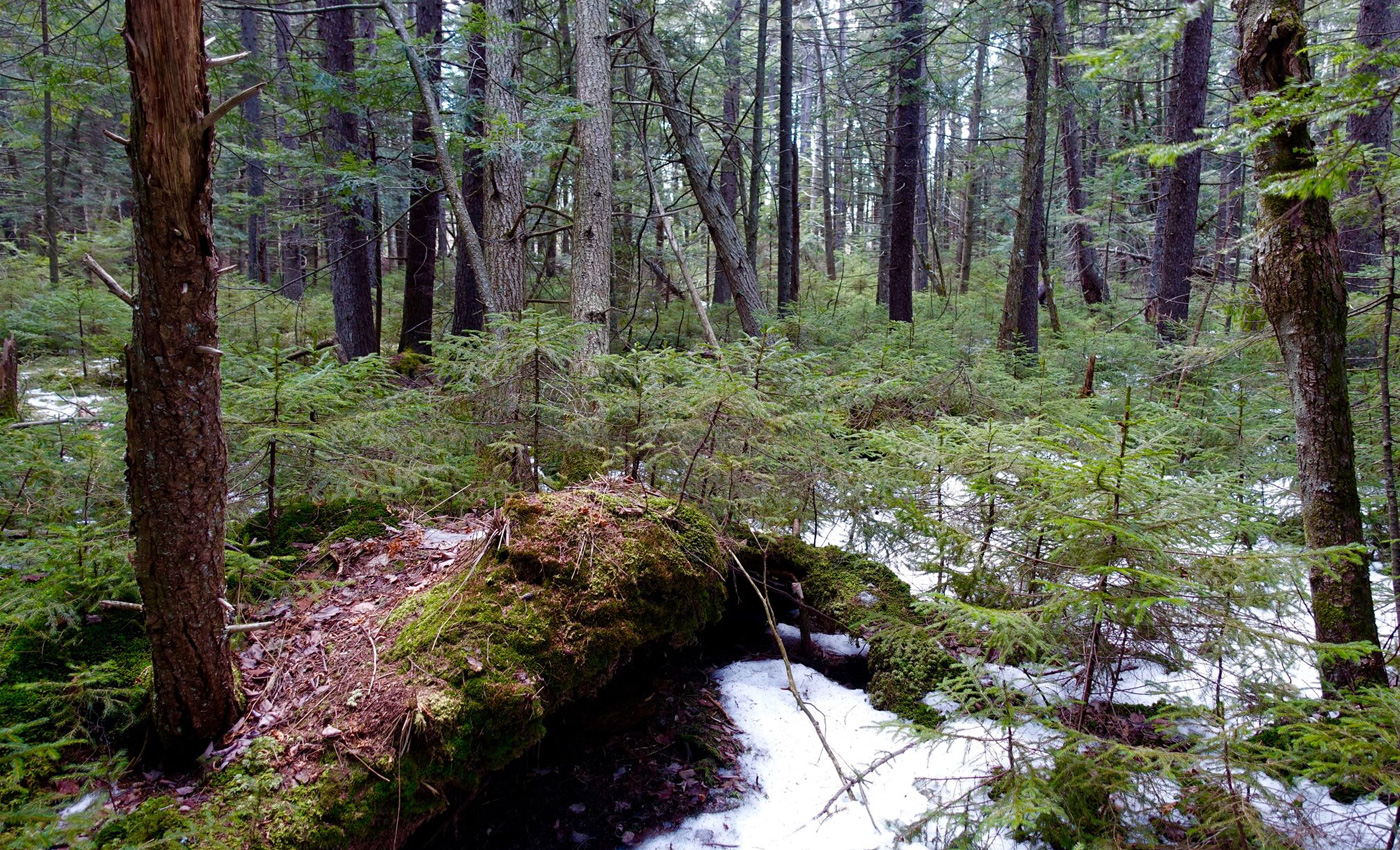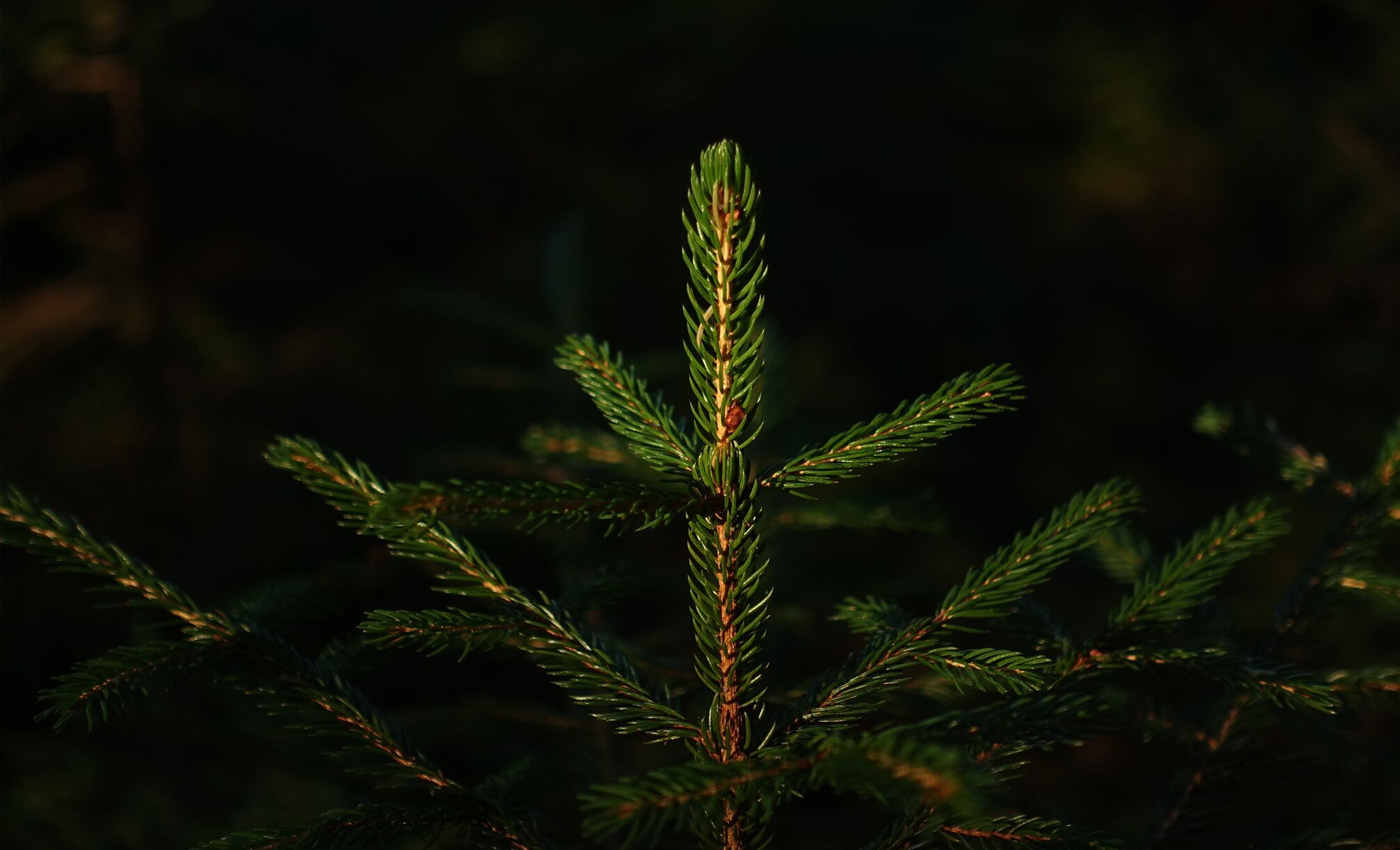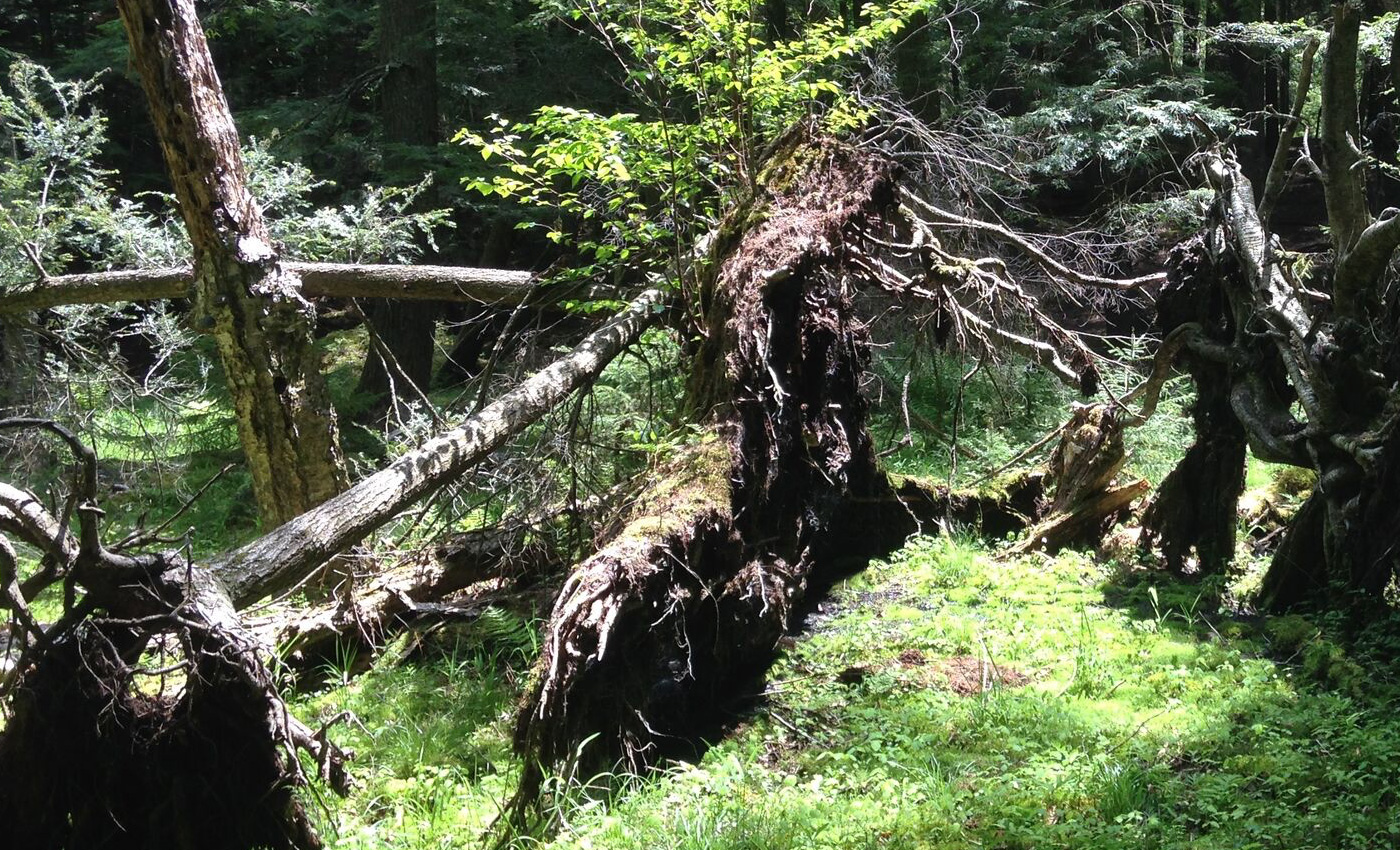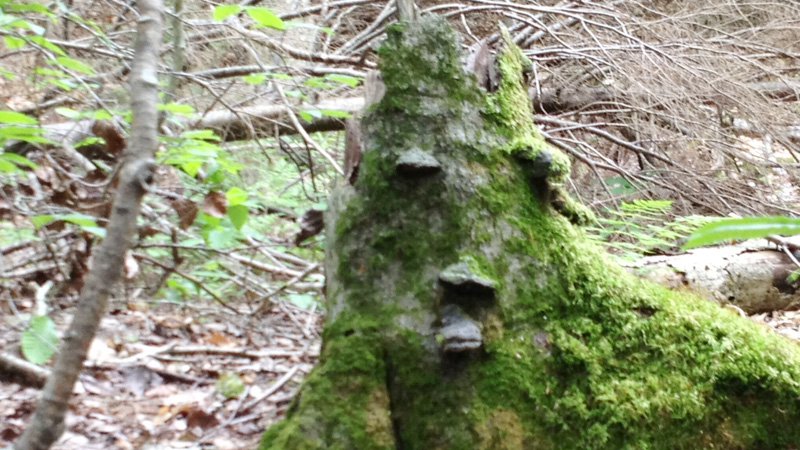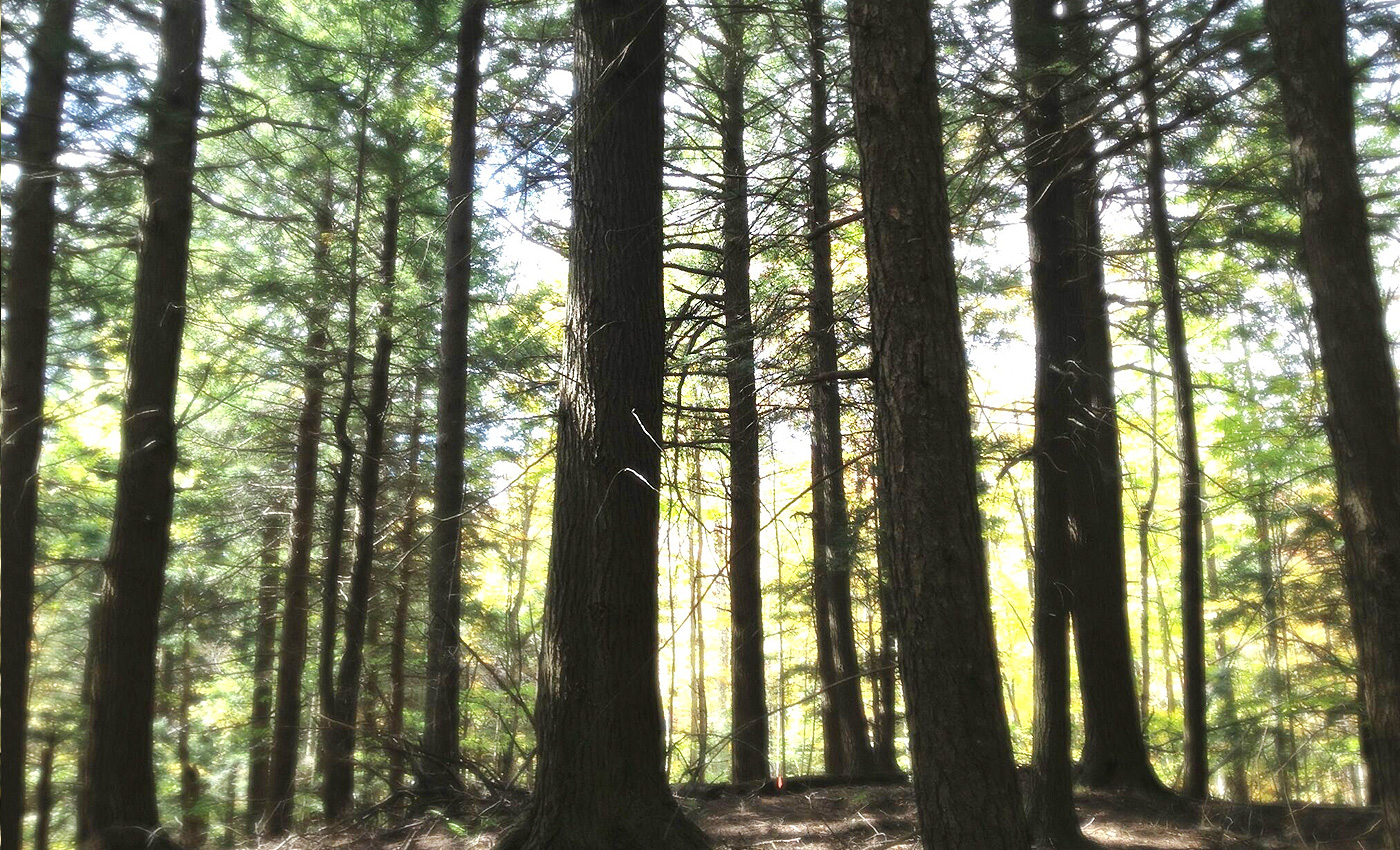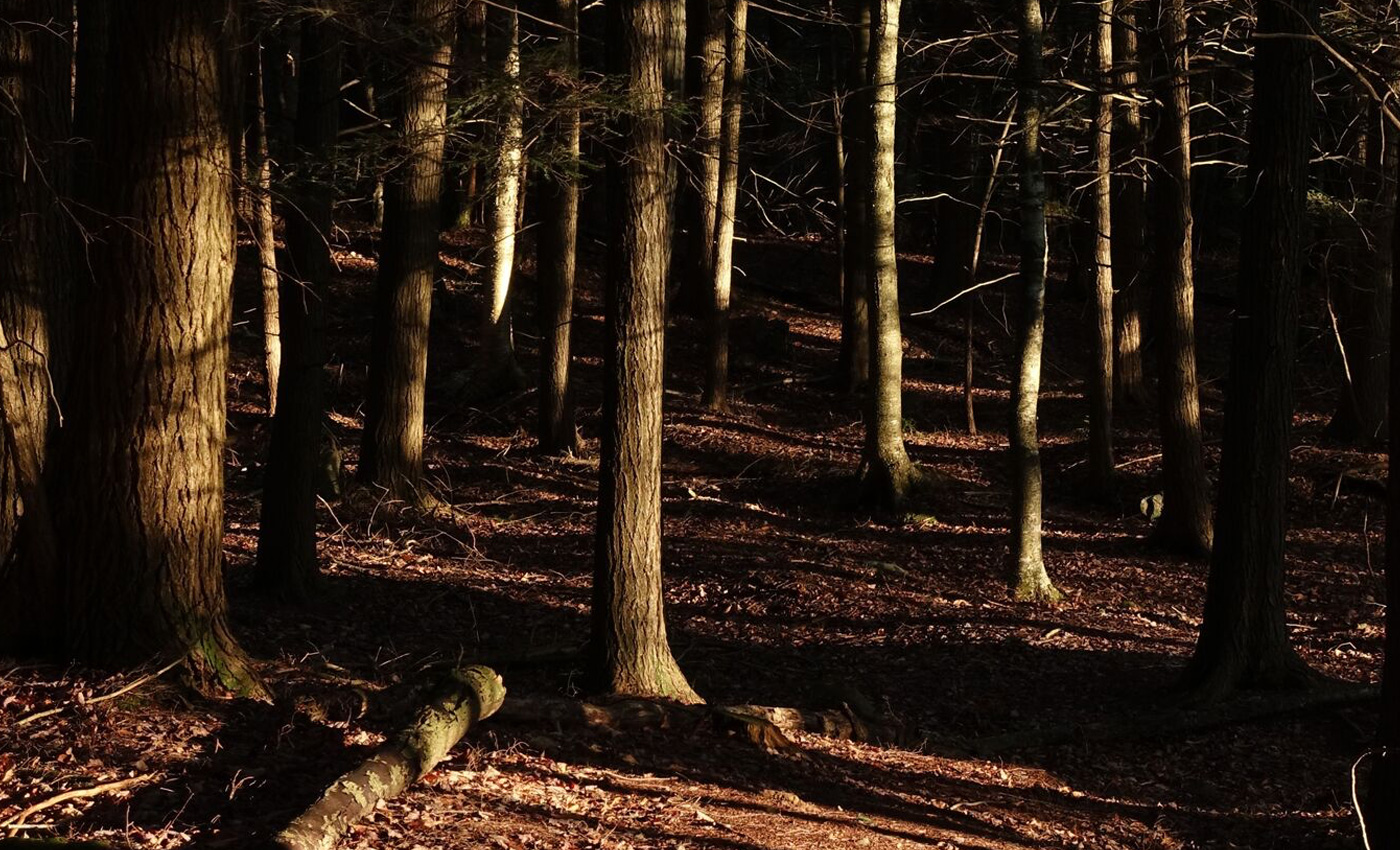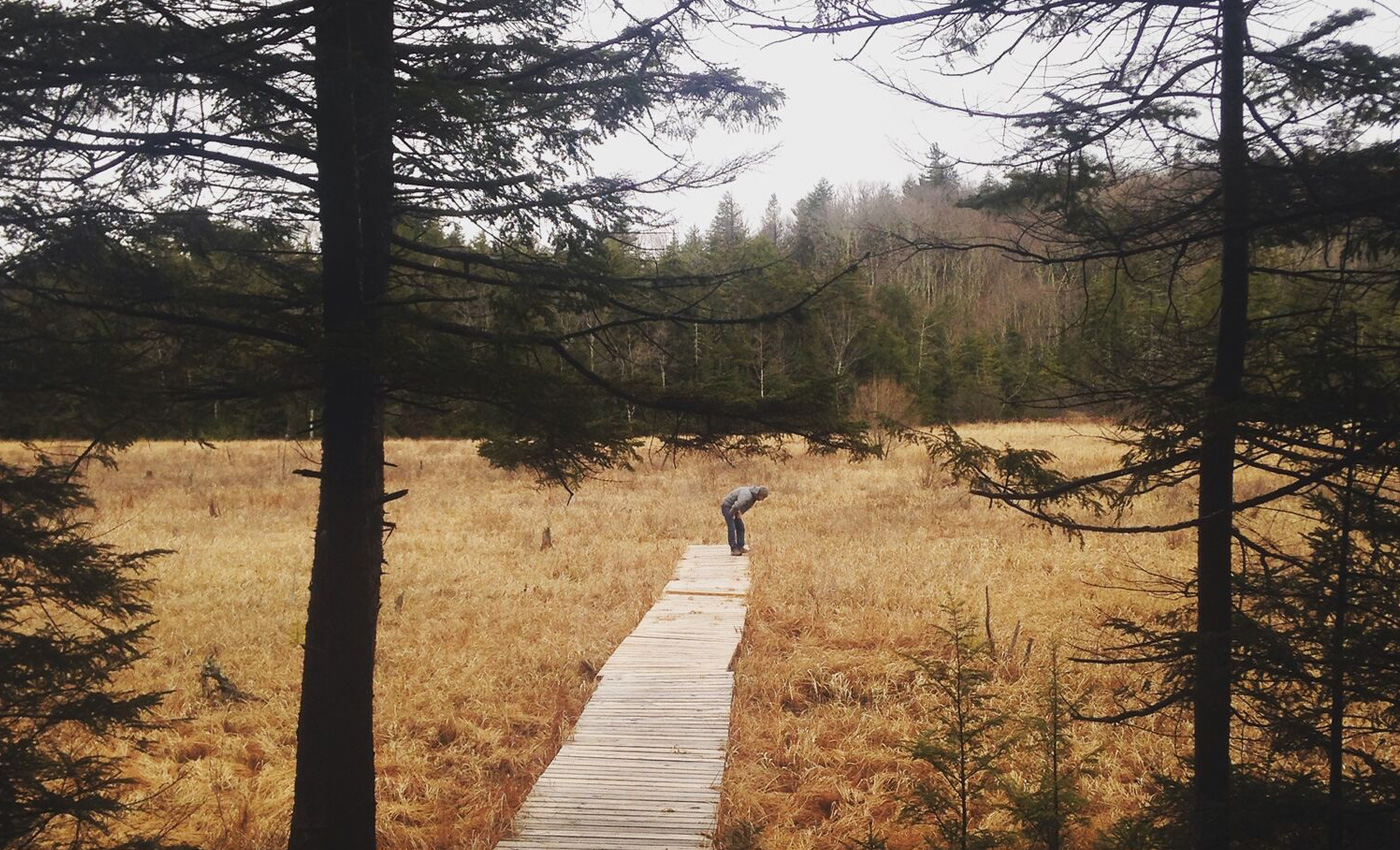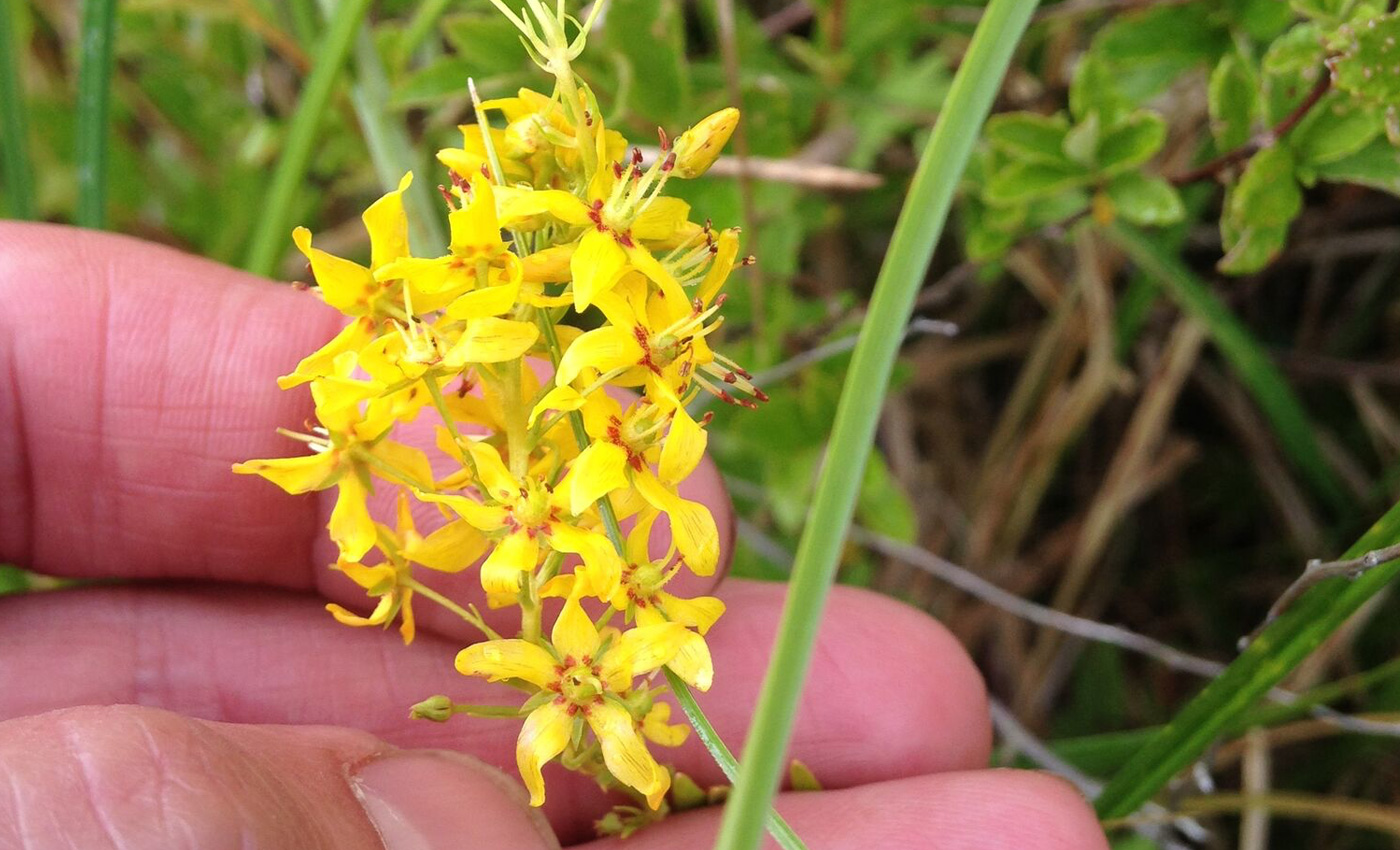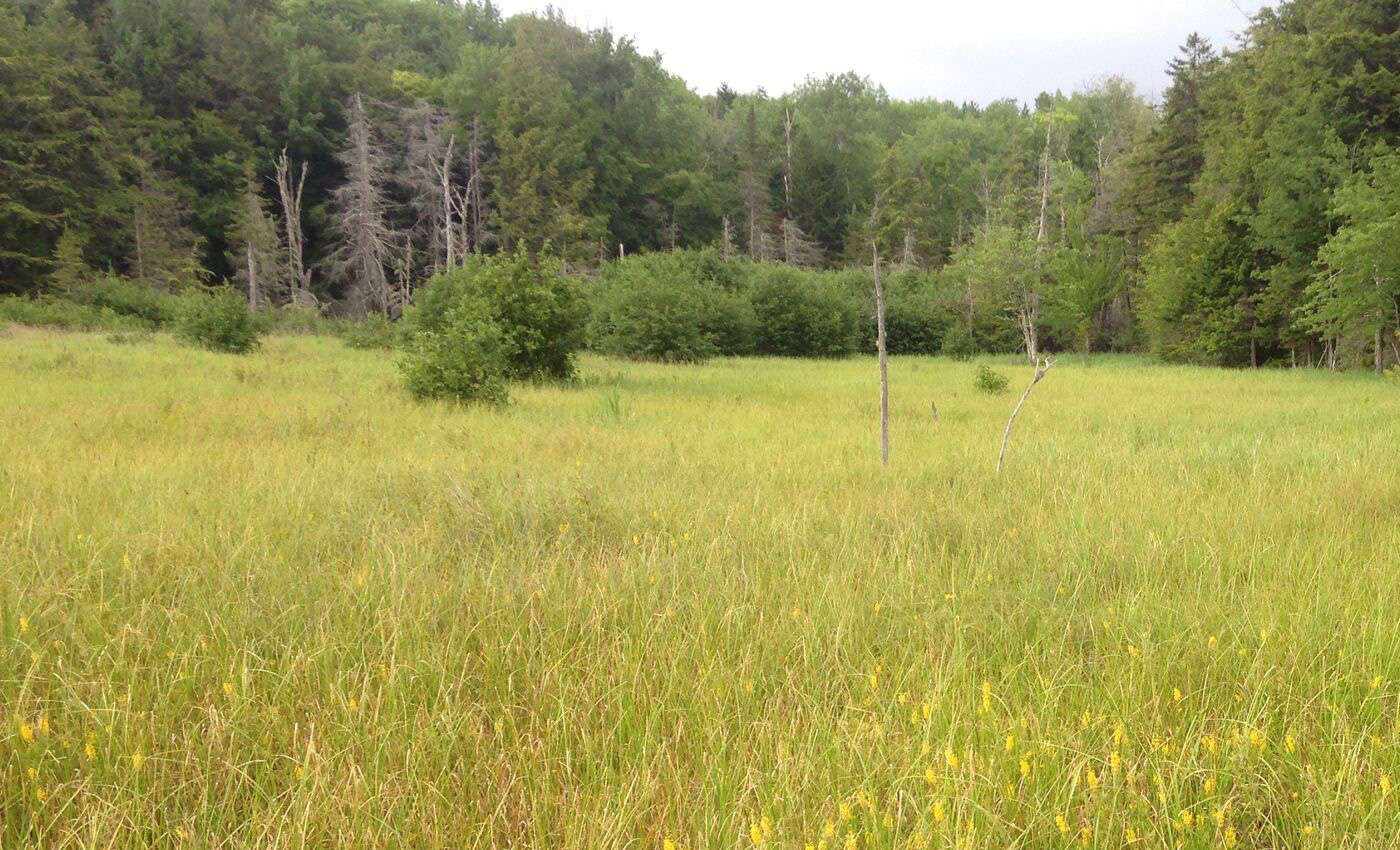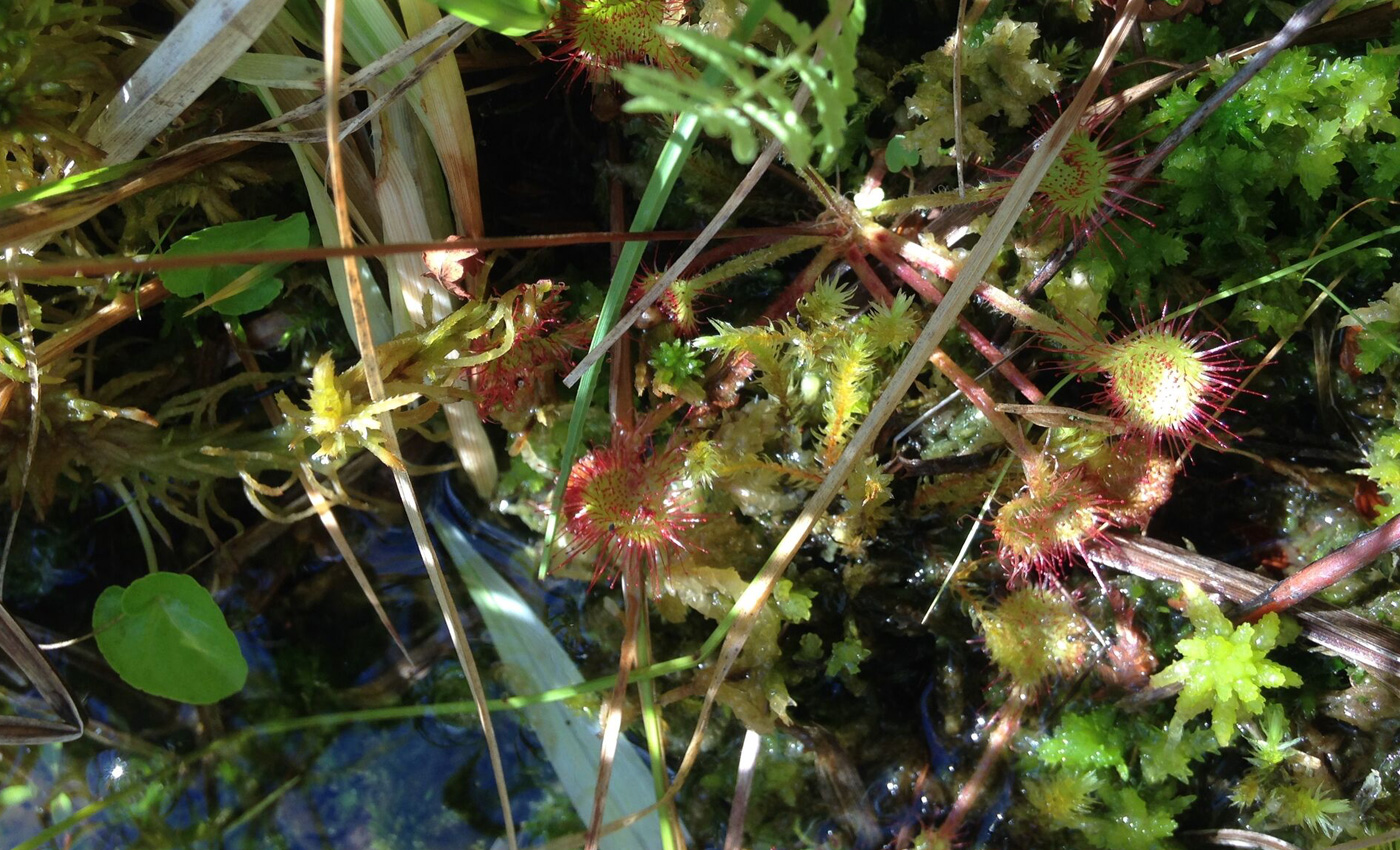Spruce Glen is the Arboretum’s newest addition. Trails wind through 150-year old stands of hemlock, spruce, fir, birch, beech, maple and their understory partners. Small changes in moisture and elevation levels lead to dramatic changes in forest type, such as the expansive Hidden Marsh, a mountain top wetland which could be mistaken for a coastal tidal marsh were it not for the 2400’ elevation. Please stay on trails to help preserve the different fragile ecosystems within the Glen. Map & Self-Guided Tour >>
Natural Spruce Nurseries. Along the edges of the trails lie natural spruce nurseries. Wetter soils and sheltered sites provide the nurturing required for the next generation of these beautiful conifers.
Emerald Bog. Deep depressions dotted through the forest and seen from the trail are ancient bogs which hold the geologic and ecologic history of the mountaintop area. We are just beginning to learn more about the Arboretum bogs’ histories, though we know that today they host a multitude of spring ephemerals, sedges and ferns.
In Fall 2019, we installed a boardwalk that allows visitors to walk through the bog while still protecting the area. In Summer 2020, an interpretive sign, telling the story of this important 14,900-year-old natural resource, was added. The boardwalk and sign were made possible through a generous grant from the Schoharie Watershed Stream Management Implementation Program (SMIP), a program of the Greene County Soil and Water Conservation District.
Hemlock Ridge. The trail passes through acres of hemlock forest. The 19th century tanning industry left a few gnarly first growth giants, but even the hemlocks that have grown up since tanners left the area are now 150-year old specimens. The trees’ dense canopy shades out even the most shade tolerant understory plants, and a walk through the silent solitary hemlock pillars approaches something holy.
The Hidden Marsh can also be called a fen. Fens are peat-forming wetlands that can support a much more diverse plant and animal community than a marsh. Alders and a few gray birch occupy raised hummocks. Yellow swamp candles, Lysimachia terrestris, bloom over the entire fen in summer, followed by hundreds of the pink native spirea, Spiraea tomentosa. Thousands of tiny insect-eating sundews, a Drosera species, grow under the various grasses, sedges and rushes.


